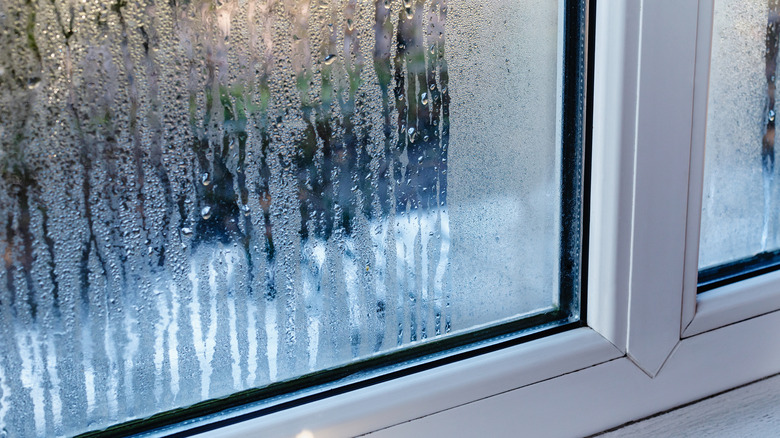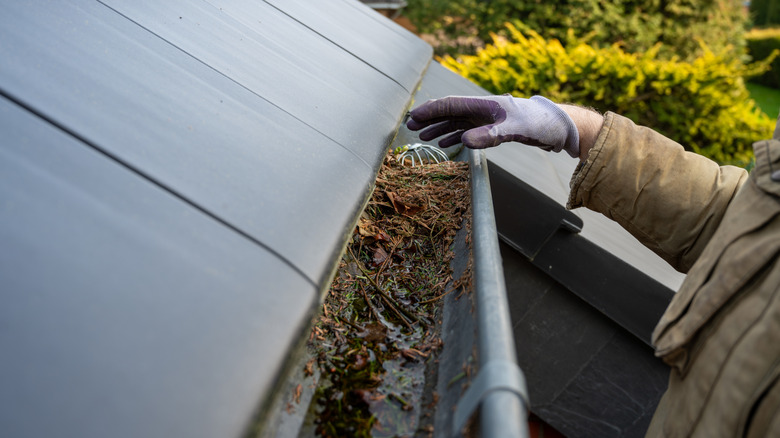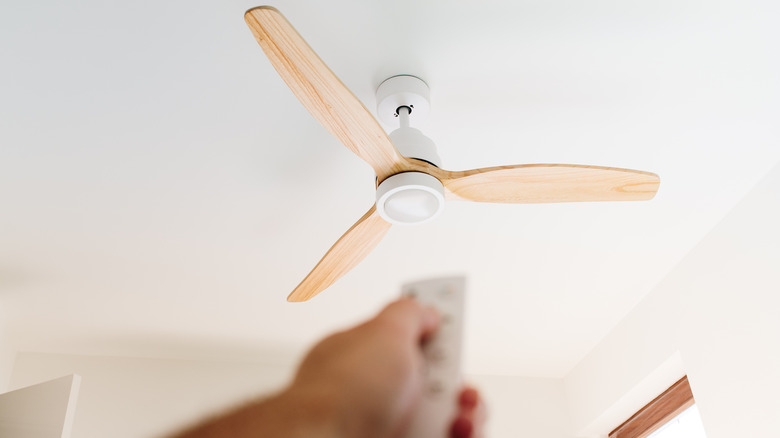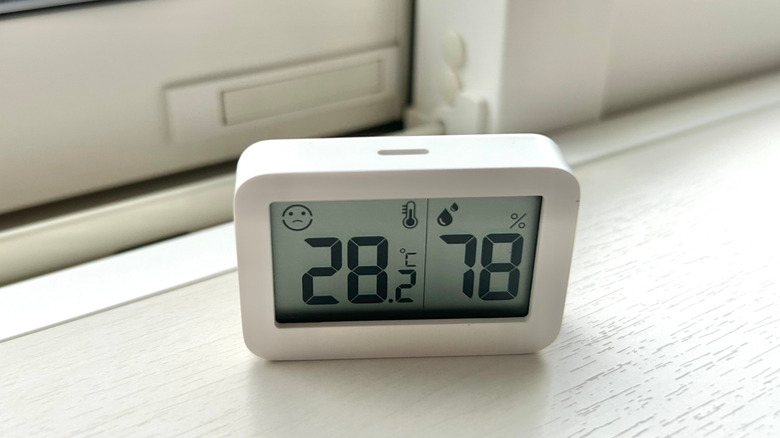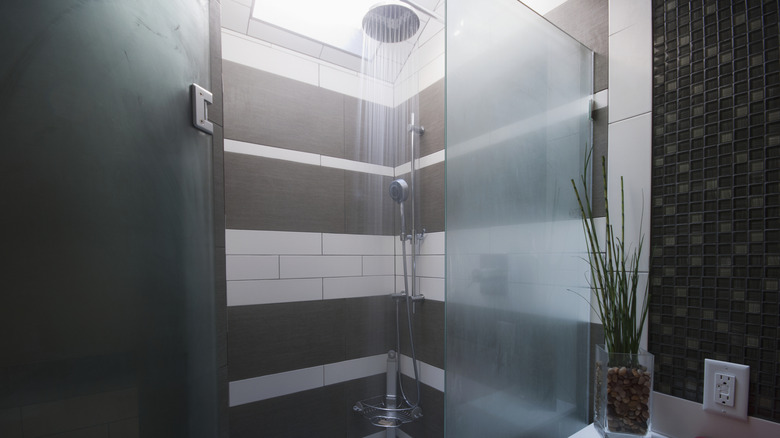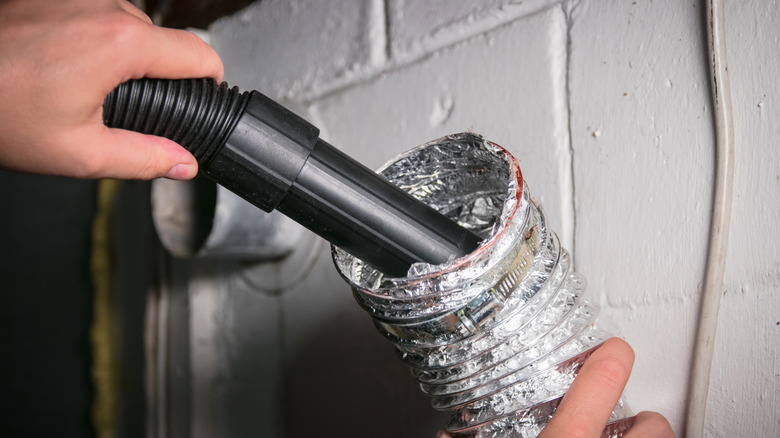Tips And Tricks To Prevent Window Condensation Without A Dehumidifier
We may receive a commission on purchases made from links.
Are you noticing condensation on the windows in your bathroom, kitchen, or other room in your home? This is, unfortunately, a common issue in many homes. The condensation forms on the surface because of temperature and humidity differences between the air on the other side of the glass and the air in the room. If the glass is cold (think a chilly winter day), the warmer and more humid air inside the house will cause condensation when it comes into contact with the surface. Think about what happens to the outside of a glass of ice water when the air temperature is warmer than the cup. Water droplets (or condensation) form all over the sides of the glass. The same thing can happen with your windows.
However, unlike that glass cup that you can easily wipe down, condensation on the windows can be a more serious problem. Frequent condensation may cause damage to the windows themselves or other nearby furniture. Whenever there is excess water present, there is also the worry that mold could start growing. Choosing an appropriately sized dehumidifier for the space is one way to combat condensation, but it isn't your only option. Ahead, we'll explore some other tips and tricks to prevent window condensation that don't rely on using a humidifier.
Clean your gutters
When you're looking for an explanation for the condensation on your windows, you're likely to focus on the areas of the home that are closest to them. However, your home's gutters may also be contributing to moisture and condensation problems. If the gutters are clogged or damaged, they won't effectively do their job of diverting water away from your home. Instead, water may leak over the sides of the gutters, sending more of it to your windows. As this cold water sits on the outside of your windows and interacts with the warmer and more humid air on the inside of the panes, condensation can form. With leaky or otherwise malfunctioning gutters, there is likely to be colder water present on the outside of the windows for extended periods, causing the condensation to stick around longer as well. Excess moisture on the exterior of your windows could also damage the frames over time by causing wood rot or corrosion.
If your gutters are just clogged, this will be a relatively easy problem to fix. Either clean the gutters yourself or hire a professional to complete the task for you. You may also want to consider installing a gutter cover to prevent leaves, sticks, and other debris from clogging them in the future. If the leaking or overflowing water is a result of damaged or defective gutters, consider contacting a roofing or gutter company to repair or replace them.
Ensure there is adequate airflow around the windows
Condensation forms on windows when there is excess moisture present. One way to reduce the amount of moisture in the environment is to increase the airflow. Take a moment to examine the area around the windows — both on their exterior and their interior — to make sure there isn't anything that could be impeding the flow of air. Outside of the house, look for any trees or bushes that are right up against the windows that might be blocking the circulation of air. Trim these back so that they are several inches — or ideally at least a foot — away from the panes. This will help to prevent condensation from forming on the outside of your windows.
You could also be inadvertently blocking airflow around the window on the inside of your house, which can worsen condensation on the inner sides of the panes. When possible, leave your curtains open. While the curtains might be keeping the cold outdoor temperatures from entering your home, they are also interfering with the flow of air and essentially trapping the moisture formed during condensation against the interior panes of the window. Without airflow, the moisture won't be able to dry. So, try to keep your curtains open as much as possible. If you don't want them fully open all the time, consider at least partially opening them to allow some air to circulate.
Open up the windows more frequently
While we're on the subject of increasing airflow to bring down humidity levels, another tip is to open up your windows more frequently. Open windows bring dry air from outside into the home. As this drier air circulates, it can help prevent moisture from accumulating on the panes.
However, there are a few things to consider before you open up all the windows in your home. You won't decrease moisture levels inside if the air outside is even more humid than the air in your home. So, choose the right days/times of days to throw open windows. Outdoor humidity levels may be lower earlier in the day during the summer. Consider opening the windows right after you get up and closing them a few hours later before the outdoor humidity level rises and cancels out the benefit you are trying to achieve. Unfortunately, the most common time of year for condensation to form on windows is during the cold winter — the time when you don't want to leave those windows open. Thankfully, there are various other ways to combat condensation, as you'll see below.
Run fans inside to improve air circulation and decrease indoor humidity levels
Opening the windows may not always be sufficient to bring down indoor humidity levels enough to prevent condensation on your windows. Plus, as we just explained, sometimes the weather outside simply isn't conducive to opening them up. Well, you can also improve airflow in your home with the help of some fans. If you have ceiling fans, keep them running to promote better circulation and prevent moisture from accumulating and causing condensation. In the summer, you'll find the combination of running fans and your air conditioner to be the most effective. Air conditioners are even better suited to removing moisture from the air.
While it is often recommended to run ceiling fans clockwise during the winter, leaving them to turn counterclockwise could help if you're dealing with moisture and condensation issues during the colder months. When the fans run counterclockwise, it helps push air down into the space, ensuring better circulation and more airflow. Running a fan clockwise gently circulates warm air that accumulates at the ceiling, which is why it's recommended in winter. You might want to try both directions to gauge if counterclockwise spinning is really the best for condensation.
Keep items that naturally release moisture away from the windows
When you want to prevent window condensation, it is important to identify any potential causes of excess moisture in your home. Unfortunately, there are a few plants you may want to avoid to prevent your home from getting too humid. Or, at a minimum, you'll want to position these plants so that they aren't releasing excess moisture right next to windows that are already having a problem with condensation. Species that have high rates of transpiration release more moisture into the air, and include spider plants, peace lilies, ferns, and rubber plants. Thankfully, there are many plants that don't give off as much moisture, such as desert species that are specifically adapted to transpire less. If you want to add some of these plants to your décor, in place of more moisture-releasing species, a few to consider include succulents and other xerophytes like desert palms.
Firewood can also be a source of excess moisture in a home. The wood collects moisture from the outdoor air. When you bring the wood inside, much of this moisture evaporates as the wood adjusts to the temperature of the home. While you should store firewood outside of the house — to prevent it from attracting termites and other pests indoors — try bringing in small amounts at a time, rather than big loads. This will help you avoid the mistake of accidentally increasing indoor humidity levels and making condensation on your windows an even bigger problem.
Lower humidity levels in small rooms with moisture absorbers
Moisture absorbers, such as the Vacplus Moisture Absorbers, do precisely what their name says. They absorb moisture, decrease indoor humidity levels, and help clear up related problems, such as window condensation. However, there is a limit to how effective these helpful tools can be. A single moisture absorber — or even a few — won't be able to drastically lower humidity levels in a large space. You could try placing the moisture absorbers directly on the windowsill, but in big rooms, you'd likely need such a large number for them to be effective that it wouldn't be practical, or aesthetically pleasing.
Instead, moisture absorbers will be most effective when used in smaller areas, such as small bathrooms or home offices that have windows plagued by condensation issues. Spread a few of the absorbers around the space, taking care to position some as close to the window itself as possible. You can also find hanging versions, like the DampRid Hanging Moisture Absorbers, that can be placed on a curtain rod. Give the absorbers some time to kick in, and hopefully, you'll notice a decrease in the amount of condensation that forms on your window. Be sure to take note of how often the manufacturer recommends replacing them, otherwise they'll lose their effectiveness.
Take steps to reduce excess moisture during and after a shower
If you were to rank the rooms in your home based on which were most guilty for your higher humidity levels, the bathroom would certainly be towards the top of the list. Those long and hot showers may be relaxing, but they release a lot of moisture into the air. As this warm and humid indoor air comes into contact with the cold windows, particularly during the winter months, it is only natural for condensation to form.
All hope is not lost, and there are some things you can do to bring down bathroom humidity levels and help prevent window condensation. Turning the water temperature down or shortening your shower time can help, but there are other tips that will have less of an impact on your simple pleasures. For one, always run the exhaust fan in the bathroom when you take a shower. The exhaust fan's job is to pull moisture from the air, and running it can help prevent windows from fogging up and getting covered with condensation droplets. Many people know to run the fan during their shower, but they don't always leave it running long enough. Instead of shutting the fan off as soon as you are out of the shower, let it run for an additional 20 to 30 minutes. This will help pull more water from the air and make sure everything is dried out.
Another way to help decrease humidity levels in the bathroom is to crack the window during your shower. Leaving the bathroom door open slightly can also help. If your exhaust fan is on, it should be sucking the steamy air out, creating a flow than pulls in air from the rest of the home, or from outside via the window, into the bathroom. This way there will be greater airflow to facilitate faster drying times, and steamy air won't be flowing escaping out into the rest of your home.
Clean your dryer vent
If you're noticing a lot of condensation on the windows in your laundry room, it may be a sign that your dryer vent needs to be cleaned. A clogged dryer vent sends all the moist air back into the laundry room, instead of expelling it outside as it should. As this moisture is released, it naturally causes humidity levels to rise, potentially creating condensation on the windows and other surfaces in the room. Cleaning the dryer vent yourself — or hiring a professional to clean it for you — will send the moisture outside instead of keeping it trapped in the laundry room, thus helping to resolve (or at least improve) the condensation problem on your windows.
There are other improvements you can make in your laundry room layout or routine that could also help reduce moisture and condensation issues. One is to be purposeful about where you place the dryer. When possible, avoid placing it in a room in the house where the temperature tends to be cold (under 41 degrees Fahrenheit) such as an unheated garage. If the room is cold, the heat created by the dryer can warm up cold window panes and create condensation.
You might also want to think twice about hang-drying your laundry indoors. When the weather allows it, take these items outside to dry instead. This way, all the excess moisture won't evaporate into the air in your laundry room (or whichever room you choose to hang them up to dry). Hanging wet clothes to dry inside has the potential to significantly increase humidity levels, particularly if there are other ventilation issues.
Address any plumbing leaks promptly
Plumbing leaks shouldn't be left unaddressed for several reasons. They can cause damage to your belongings, create an environment that's favorable for mold growth, and, yes, make it more likely for condensation to form on your windows. If there is water leaking from any of your pipes, that water is being sent into your home. Some of it will evaporate, making the space more humid. If the leak is small, the changes in humidity may be more subtle, which may make it more difficult to pinpoint the cause.
If you can't find obvious causes for the condensation on your windows (like temperature differences between indoors and outside) it is worth examining whether a leaky pipe may be to blame, even if you don't see any signs of a leak. Finding and fixing water leaks isn't always straightforward, but besides unaccounted for condensation, some other indicators of a leak include higher water bills, damage to baseboards or flooring, short-circuiting lights or smoke detectors, or visible mold growth. You could try using a moisture meter, such as the General Tools Digital Moisture Meter, to determine whether the moisture levels are higher than they should be behind your walls or under the floors. If you are unable to find a leak yourself, but still suspect there may be one somewhere in the house, consider hiring a plumber to conduct an inspection of your home. Once they determine the cause, the plumber can help you determine whether the leaky pipe can be fixed without the need for a full replacement.
